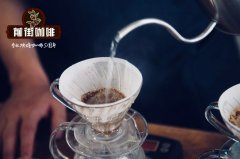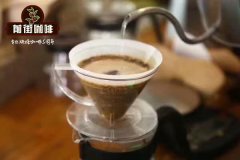Coffee extraction principle Core Coffee extraction principle what is the extraction of coffee

Professional coffee knowledge exchange more coffee bean information please follow the coffee workshop (Wechat official account cafe_style)
Extraction (Extraction): the transfer of substances from one solvent to another by making use of the difference in solubility or partition coefficient between two immiscible (or slightly soluble) solvents. The method of extracting most of the substances after repeated extraction. Extraction, also known as solvent extraction or liquid-liquid extraction (to distinguish it from solid-liquid extraction, that is, extraction), also known as extraction (commonly used in the petroleum refining industry), is a kind of liquid extractant for the treatment of two-component or multi-component solutions that are immiscible with it. The process of mass transfer and separation of components is a widely used unit operation. Based on the principle of similar miscibility, there are two ways of extraction: liquid-liquid extraction and solid-liquid extraction.
Solid-liquid extraction, also known as extraction, uses solvents to separate components from solid mixtures, such as sugar beets with water, soy oil from soybeans with alcohol to increase oil production, and water to extract active ingredients from traditional Chinese medicine to produce flow extracts called "leachate" or "leach". Soaking coffee in water to extract various flavor substances in coffee must also belong to solid-liquid extraction.
The difference of solubility or partition coefficient of a substance in two immiscible (or slightly soluble) solvents causes the substance to be transferred from one solvent to another. After repeated extraction, most of the compounds were extracted. It belongs to physical change.
Coffee extraction principle Coffee production equipment is various and methods are different, but the core extraction principles are all the same. The core process of coffee extraction principle: 1. Crushing coffee beans to increase the surface area of coffee in contact with water; 2. Coffee powder is fully soaked in aqueous solution, coffee essence is hydrophilic dissolved; 3. Separate the coffee solution and coffee grounds.
All modern coffee extraction is the core process of soaking and filtration, which belongs to the category of physics, and there are basically no chemical changes in the process (there are chemical changes in the brewing process of ESPRESSO). The differences in the thickness of coffee powder, the length of soaking time, the method of separation and filtration, and so on, have created a wealth of coffee making utensils and techniques.
At present, some of the more primitive coffee extraction methods, such as direct brewing coffee and Turkish coffee, are not filtered by some coffee producing villages in Ethiopia, but most modern people prefer a pure taste rather than a mouthful of coffee grounds.
Although the core process of coffee extraction is the same, according to the significant differences in the pressure and time used in coffee extraction, no matter which way we want, the result can be fully extracted. without excessive extraction of bad bitterness. Modern coffee extraction methods can be simply divided into two types:
1: Italian Fast espresso (Espresso)
It was invented in Italy to extract 30 milliliters of espresso in 25 seconds at 9 atmospheric pressure and 92 degrees Celsius. This is significantly different from other coffee extraction methods, which can be done under unnatural conditions, reflecting the involvement of science and technology. Espresso Espresso can generally be made by Italian semi-automatic coffee machines and fully automatic coffee machines. A good Espresso requires higher price and quality requirements for coffee machines and bean grinders.
2: immersion extraction (Steep Extraction)
It is a traditional, natural and simple way of coffee extraction; the extraction temperature is close to 85-92 and the filtration pressure is about 1 atmospheric pressure. Can be subdivided into: pressure filtration: use artificial pressure to filter coffee, including French pressure (French pressure filter coffee cup French Press), AeroPress; siphon: use the pressure difference caused by steam cooling to filter coffee, including siphon coffee maker Syphon, Belgian coffee maker Drip filter: natural gravity drip filter coffee, including American electric drip filter coffee maker, Vietnam drip filter coffee maker, Swiss gold Swissgold kf-300 drip coffee maker, hand filter module, ice drop coffee maker, etc. Steam pressurization: Italian mocha pot Moka, many manufacturers also claim that mocha pots can make Espresso for commercial interests, but the coffee made by early mocha pots is essentially different from modern Espresso coffee. The pressure of mocha pots is only more than 1: 00 atmospheric pressure, and the pressure and final coffee extraction time may not be as fast as siphon coffee pots. According to the performance index, we still classify the mocha pot as the natural traditional immersion extraction Steep Extraction.
Important Notice :
前街咖啡 FrontStreet Coffee has moved to new addredd:
FrontStreet Coffee Address: 315,Donghua East Road,GuangZhou
Tel:020 38364473
- Prev

Coffee extraction principle Coffee extraction method Coffee extraction course
Professional coffee knowledge exchange more coffee bean information please pay attention to the coffee workshop (Wechat official account cafe_style) Coffee cooked beans are 70% of the fiber insoluble in water, soluble flavor accounts for only 30% of the weight of cooked beans. The extraction rate of coffee powder is 18%-22%, and the coffee brewed is the most delicious, which is the so-called gold extraction rate range. The flavor extracted from brewing coffee.
- Next

Coffee extraction principle Core Coffee extraction principle what is the extraction of coffee
Professional coffee knowledge exchange more coffee bean information please pay attention to the coffee workshop (Wechat official account cafe_style) extraction (Extraction): refers to the use of substances in two immiscible (or slightly soluble) solvents in the different solubility or distribution coefficient, the transfer of substances from one solvent to another. After repeated extraction, most of the substances were extracted.
Related
- Beginners will see the "Coffee pull flower" guide!
- What is the difference between ice blog purified milk and ordinary milk coffee?
- Why is the Philippines the largest producer of crops in Liberia?
- For coffee extraction, should the fine powder be retained?
- How does extracted espresso fill pressed powder? How much strength does it take to press the powder?
- How to make jasmine cold extract coffee? Is the jasmine + latte good?
- Will this little toy really make the coffee taste better? How does Lily Drip affect coffee extraction?
- Will the action of slapping the filter cup also affect coffee extraction?
- What's the difference between powder-to-water ratio and powder-to-liquid ratio?
- What is the Ethiopian local species? What does it have to do with Heirloom native species?

